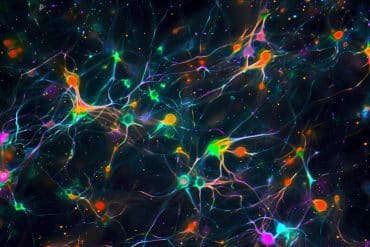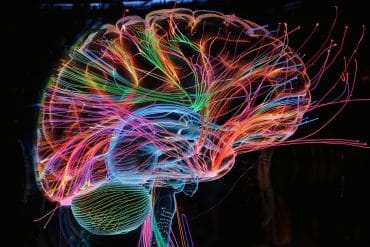Summary: Niaspan, an FDA-approved drug, limits disease progression in lab models of Alzheimer’s disease.
Source: Indiana University
Indiana University School of Medicine researchers have found that niacin limits Alzheimer’s disease progression when used in models in the lab, a discovery that could potentially pave the way toward therapeutic approaches to the disease.
The study, recently published in Science Translational Medicine, investigates how niacin modulates microglia response to amyloid plaques in an Alzheimer’s disease animal model.
Gary Landreth, Ph.D., Martin Professor of Alzheimer’s Research, and Miguel Moutinho, Ph.D., postdoctoral fellow in Anatomy, Cell Biology and Physiology, led the study.
“This study identifies a potential novel therapeutic target for Alzheimer’s disease, which can be modulated by FDA-approved drugs,” Moutinho said. “The translational potential of this strategy to clinical use is high.”
Niacin, which sustains metabolism throughout the body, is mainly obtained through a typical diet; it also can be taken in supplements and cholesterol-lowering drugs. The brain, however, Moutinho found, uses niacin in a different manner.
In the brain, niacin interacts with a highly-selective receptor, HCAR2, present in immune cells physically associated with amyloid plaques. When niacin—used in this project as the FDA-approved Niaspan drug—activates the receptor, it stimulates beneficial actions from these immune cells, Landreth said.

“After the Alzheimer’s disease animal models received niacin, they ended up with fewer plaques and they have improved cognition,” Landreth said, “and we directly showed that these actions were due to the HCAR2 receptor.”
Past epidemiology studies of niacin and Alzheimer’s disease showed that people who had higher levels of niacin in their diet had diminished risk of the disease, Landreth said. Niacin is also currently being used in clinical trials in Parkinson’s disease and glioblastoma.
To further their research into niacin and the brain, Landreth and Moutinho are collaborating with Jared Brosch, MD, associate professor of clinical neurology, who is applying for a clinical pilot trial to study the affects of niacin and the human brain.
About this neuropharmacology and Alzheimer’s disease research news
Author: Press Office
Source: Indiana University
Contact: Press Office – Indiana University
Image: The image is in the public domain
Original Research: Open access.
“The niacin receptor HCAR2 modulates microglial response and limits disease progression in a mouse model of Alzheimer’s disease” by Miguel Moutinho et al. Science Translational Medicine
Abstract
The niacin receptor HCAR2 modulates microglial response and limits disease progression in a mouse model of Alzheimer’s disease
Increased dietary intake of niacin has been correlated with reduced risk of Alzheimer’s disease (AD). Niacin serves as a high-affinity ligand for the receptor HCAR2 (GPR109A). In the brain, HCAR2 is expressed selectively by microglia and is robustly induced by amyloid pathology in AD.
The genetic inactivation of Hcar2 in 5xFAD mice, a model of AD, results in impairment of the microglial response to amyloid deposition, including deficits in gene expression, proliferation, envelopment of amyloid plaques, and uptake of amyloid-β (Aβ), ultimately leading to exacerbation of amyloid burden, neuronal loss, and cognitive deficits.
In contrast, activation of HCAR2 with an FDA-approved formulation of niacin (Niaspan) in 5xFAD mice leads to reduced plaque burden and neuronal dystrophy, attenuation of neuronal loss, and rescue of working memory deficits. These data provide direct evidence that HCAR2 is required for an efficient and neuroprotective response of microglia to amyloid pathology.
Administration of Niaspan potentiates the HCAR2-mediated microglial protective response and consequently attenuates amyloid-induced pathology, suggesting that its use may be a promising therapeutic approach to AD that specifically targets the neuroimmune response.






